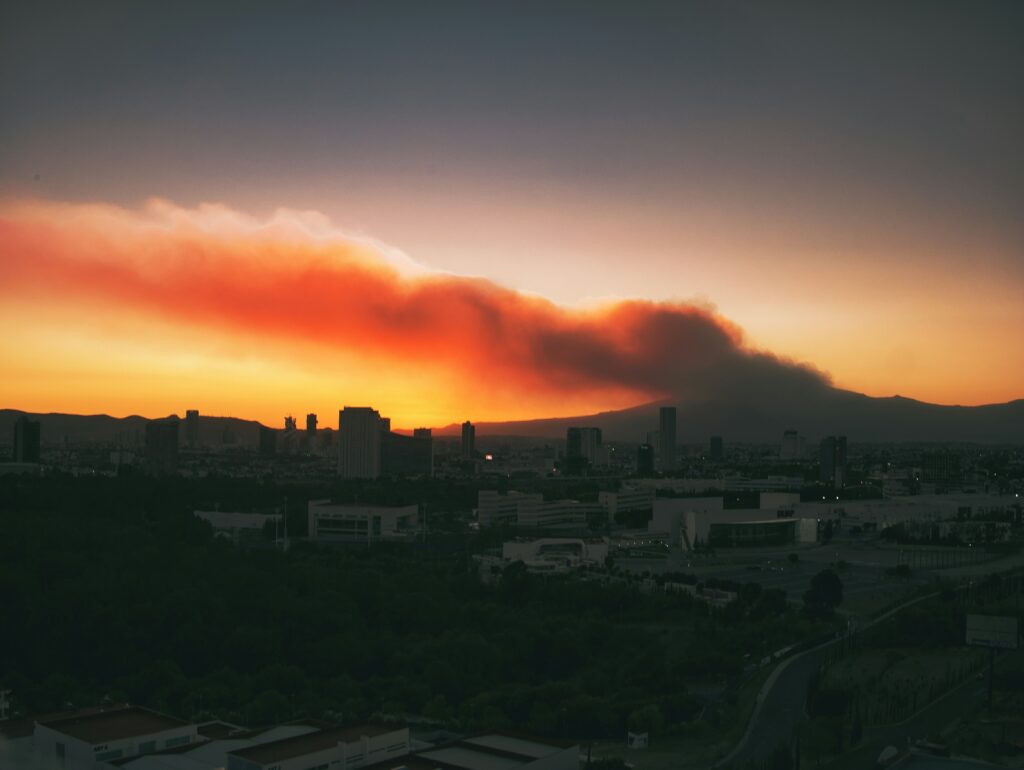Did ChatGPT Play a Role in Fuelling California's Wildfires?
Did ChatGPT Play a Role in Fuelling California's Wildfires?
Alice Hartwell

Early 2025 headlines were dominated by the devastating wildfires that swept through Los Angeles’ rugged, natural landscape—yet another stark reminder of the escalating instability and unpredictability of our global environment. A summer of record-breaking temperatures, and lack of rainfall between October and January (only 4% of the typical amount), amalgamated with strong, dry winds, created the perfect storm, leaving 40,500 scorched acres in its wake. Fires cannot be fought without water, and with this natural resource becoming a growing scarcity in areas like California, is AI partially to blame?
AI and the likes of ChatGPT, despite still being in infancy, have seamlessly integrated into our daily lives. Whether it’s to streamline meeting notes or to give us high-protein meal prep ideas, what once was “I’ll Google it” is slowly but surely being replaced by “I’ll put it into ChatGPT”. The development of AI is what many consider progress, a technological leap into the future—but what if simultaneously its side effects have the power to take us backwards, contributing to an ever-depleting loss of our planet’s natural resources, and exaggerating crises like LA’s recent wildfires?
What the average ChatGPT user might not realise is just how much energy consumption goes into a simple “Ask me anything”. On average, a ChatGPT query uses almost 10 times that of a Google search, with those simple emails we ask it to draft using 500 ml of water at a time. One study carried out by the University of California found that between 2021-2022, Microsoft’s global water usage rose by 34% due to heavy investment in AI technology.
So how exactly does using AI drain water resources? Water is needed to cool down the servers, stored in data centres, that generate heat after using electricity to process the demands of AI technology, especially on hot California days. While there are other methods available, like air cooling, fresh water-based cooling is the most effective, and therefore, the most relied upon. When this kind of water demand is created in already drought-prone areas like LA, many raise ethical concerns about prioritising the safety of human life over the everyday convenience of AI.
With climate change remaining an ever-growing concern, and droughts in California only likely to get more intense, is there a way to live with AI in a sustainable way? Ongoing research is exploring ways to reduce the environmental impact of AI models like ChatGPT, including optimising their energy efficiency, opting to use renewable energy or creating more effective water-cooling systems that don’t prove so wasteful.
As AI becomes a firmly established part of daily life, the race to advance the technology is arguably diverting attention, and resources, from the urgent fight against climate change. This tension has already surfaced in events like this year’s early California wildfires, and unfortunately, it’s a crisis we’re likely to witness again. In areas of the world where natural resources are already being stretched thin, is it right to proliferate a new dimension to the already complex equation? Has the world already drunk too much of the AI-cool aid to turn back now? One thing is clear, just like so many of the systems that power our world, we need to find a more responsible way forward. These wildfires felt, in the most visceral sense, like the planet screaming. The question is: how much longer can we afford to ignore its call?
Share This Story
Related Posts

Is Your Home Making You Sick? Why It’s Time to Reset Your Cleaning Routine
Is Your Home Making You Sick? Why It’s Time to Reset Your Cleaning Routine How indoor air pollution and toxic products are harming your health

Did ChatGPT Play a Role in Fueling California’s Wildfires?
Did ChatGPT Play a Role in Fuelling California’s Wildfires? Alice Hartwell Credit: Unsplash Early 2025 headlines were dominated by the devastating wildfires that swept through

Is Outlet Shopping Actually Sustainable? Let’s Discuss
Is Outlet Shopping Actually Sustainable? Bianca Foley Outlet shopping and discount designer stores have long been the ultimate fashion treasure hunt—scoring past-season gems at a

Sustainable Bakeries to Visit in the UK
(Image credit: Mix Interiors) Sustainable Bakeries to Visit in the UK There’s nothing more comforting than indulging in freshly baked goods. But what if you
